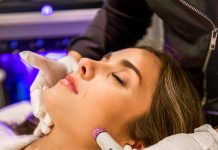
It’s no surprise that Americans are under a lot of stress. A relentless torrent of COVID-19 information — and misinformation — along with endless pandemic memes, political rants, and complicated dance challenges on social media can have that effect. Indeed, the American Psychiatric Association reported in late March that 48 percent of Americans were anxious about potentially contracting the virus, and 62 percent were worried about their families and loved ones getting sick. All this anxiety can take a toll on our physical health. Stress and other strong emotions can present as shortness of breath or rapid breathing, according to the APA. Acute stress can trigger asthma attacks, and rapid breathing can cause panic attacks for those prone to them. Fortunately, we have the power to use our breath for good as well, harnessing it to calm ourselves and restore our well-being. We’ve rounded up some breathing techniques to help shake off the stress and bring you back to a peaceful state.
Pursed-Lip Breathing
Anxiety can lead to something called hyperventilation syndrome, says Dr. Samuel Allen, a pulmonary and critical care specialist at Beaumont Hospital in Troy. This happens when a person feels dizziness along with numbness in their fingers and toes from blowing off so much carbon dioxide that their carbon dioxide levels fall. To combat this, Allen suggests the pursed-lip breathing exercise. Start by sitting in a comfortable chair with your feet flat on the floor and shoulder length apart. Place your hands in your lap. Inhale through your nose for one second. Exhale for three to four seconds with your lips puckered as if you’re giving a kiss. Allen says this is a common practice shared with patients in Beaumont’s pulmonary rehabilitation programs. “They feel like they’re getting more oxygen and it allows them to relax,” says Allen, who is also a COVID-19 survivor.Ěý
4-7-8 Breathing
Dr. Ryan Gauthier, a doctor of acupuncture and oriental medicine for Henry Ford’s Center for Integrative Medicine at the Henry Ford Medical Center in Novi, suggests this rhythmic breathing technique. As with the previous exercise, start by sitting in a comfortable chair with your feet flat on the floor. Do this in a quiet environment, or maybe play soft instrumental music in the background. Inhale through the nose for a count of four, hold for seven counts, and exhale through the mouth for eight counts. “If those counts are too long for somebody that’s starting to build up to it, it’s more about the ratio of the breath than the actual breath,” Gauthier says. “You could breathe in through the nose for two counts, hold the breath for three, three and a half seconds, and exhale through the mouth for four seconds.”
Progressive Relaxation
This technique recommended by Gauthier allows you to control your breath while tightening and relaxing your muscles. While sitting upright, start off with taking a deep breath in, followed by a deep breath out. The next time you inhale, lightly curl your toes and hold for a second to feel the muscle tension. As you exhale, release the tension in your toes and feel the muscles relaxing. Take another deep breath and tighten your calves, repeating the same steps. Continue this exercise moving up the body, from the calves to the thighs, then the glutes, abdomen, chest, shoulders, neck, and ending with your eyebrows. “We move one muscle group at a time, slightly tensing and relaxing as we’re deep breathing,” Gauthier says. “It’s really showing the body the difference between tension and relaxation.” Gauthier suggests trying this technique twice a day, and says to avoid areas of injury. For injured areas, rather than tensing the muscle, solely focus on your breath going to that part of the body.
|
| Ěý |
|









